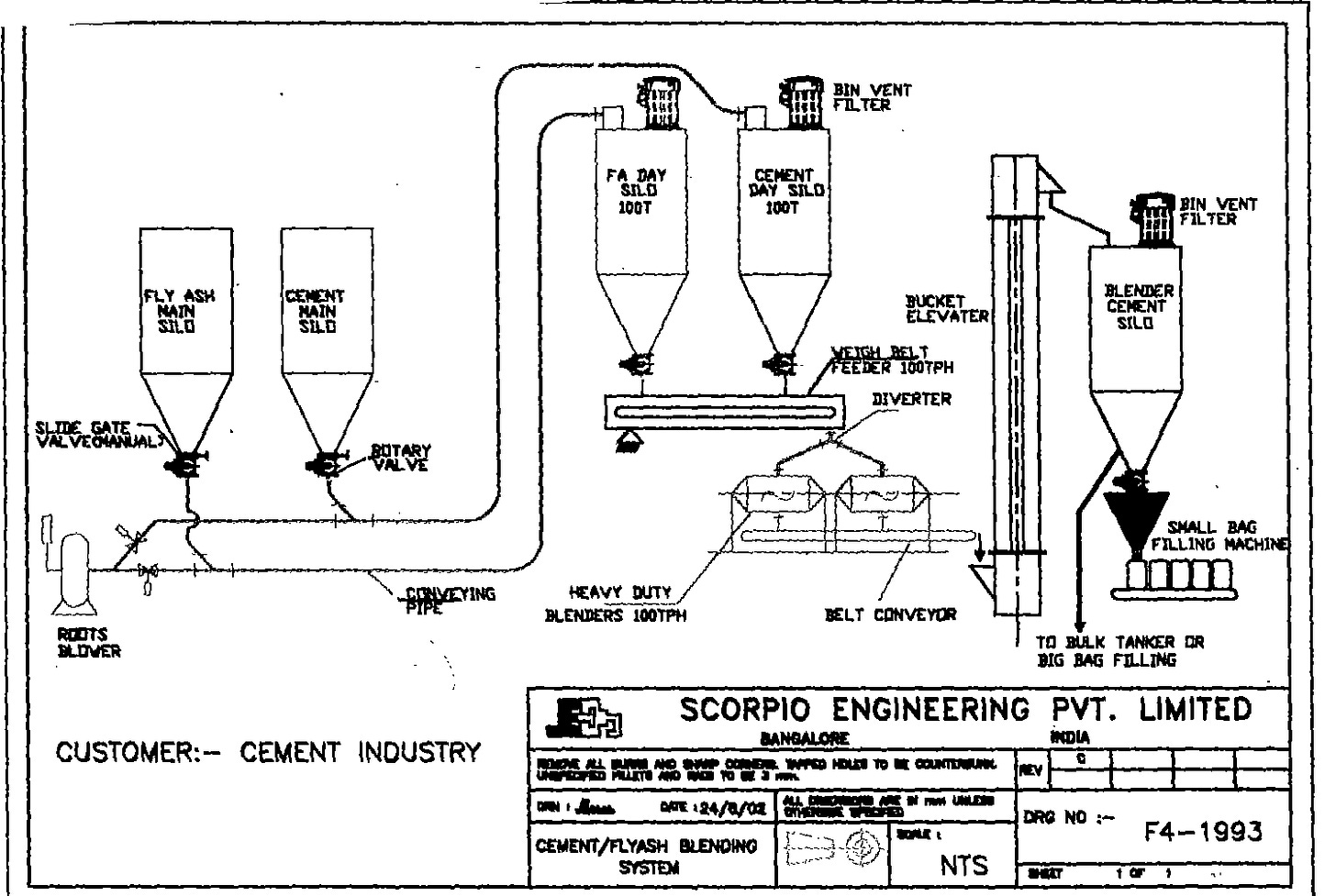Material Troubles: Fly ash blending with cement
Explores the blending of fly ash with cement without having to mix the flyash in the clinker grinding circuit.
Bulkagram 8, Dec 9, 2021
Greetings!
Designing bulk powder conveying systems has been our forte since the early 80s.
My personal love affair with powder handling technology began with a chance meeting with the guru of pneumatic conveying: Dr. David Mills when he and Dr. Stan Mason of the then Glasgow Caledonian University were conducting a seminar on pneumatic conveying at my alma matter Regional Engineering College, Tiruchirapalli in the early 80s.
Our first order for a pneumatic conveying system for polyester pellets in aluminium construction was received in 1984 and since then we have grown older and wiser….
Powder behaviour is a challenge to understand and unravel. Many PhD thesis’ have been written on this topic but it is still a mystery albeit solved in bits and pieces. This aura is something that has driven us over the years.
Clocking in at over 2000 installations today, and being in business for so long, we have been cussed and discussed, talked about, lied about, lied to, praised, honoured, hung up, held up and bled. The only reason we stay in business is to see what on earth can happen next!
This note explores the blending of fly ash with cement without having to mix the flyash in the clinker grinding circuit.
Fly ash and cement are stored in the cement plant in large storage silos from where they are pneumatically conveyed to day storage silos which are located above ribbon type blenders. The ribbon blender is a batch blender and among the largest sizes, a batch of approximately 8-10 tonnes of blended product can be made. With a blending time of 5-6minutes, a throughput of approximately 100TPH can be obtained by using two blenders such that when one is blending, the other is being filled with materials to be blended. The day storage silos will have approximately 100 tonnes of fly ash and cement thus giving a buffer storage of about 1 hour.
The ratio of flyash to cement in the blender is controlled by having the day silos discharge to a weigh belt feeder common to both fly ash and cement silos. This will enable the ratio control. The Rotary Valves located below day silos achieve metered feed of the materials to the blenders.
To avoid segregation in the blended product that is discharged from the blenders, a belt conveyor located below the weigh feeder takes the blended product to a bucket elevator and thence to a blended product silo whose capacity can be approximately 200 tonnes.
From this blended product silo, the material can be bagged using a regular bagging station both in small as well as in big bags. A suitable arrangement for bulk tanker filling can also be provided.
It is possible that the system described above may vary depending on individual plant requirement. For Fly Ash, being highly corrosive, wear concerns are addressed by proper choice of materials of constructions and operational parameters, and this is an entire other post!
Dynamic blender use can be dispensed with if we use gravity blending silos which of course require a great degree of engineering and experience to design and manufacture.
Watch this space for Fly Ash handling through Dense Phase and Unloading of Fly Ash from Ships!





Well explained. Thanks for sharing.